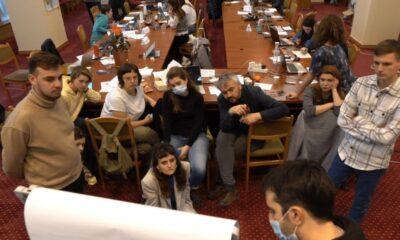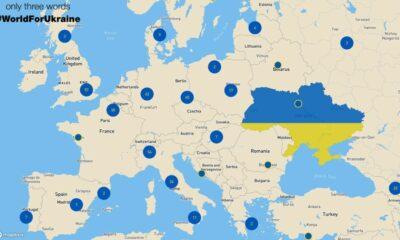Economy
Moldovan banking system gets out of crisis
Reading Time: 3 minutesMoldovas banking system gets out of crisis. The assets increased in 2010, especially the loan portfolio. The latters rate dropped to historical minimal levels. Yet, the burden of non-performing loans remain, though less acute than one year ago.
Moldova’s banking system gets out of crisis. The assets increased in 2010, especially the loan portfolio. The latter’s rate dropped to historical minimal levels. Yet, the burden of non-performing loans remain, though less acute than one year ago.
The first signs of re-launch appeared at the end of the first quarter after a period of recession that started in late 2008. At the end of last March, the banking sector became profitable again, and the assets started growing, just like the other related indexes.
During the first 11 months of 2010, the first-degree capital increased 8.43 per cent up to 6.968,3 million lei. This shows a better capacity of the banks to cover eventual losses and ensure a better protection of depositors’ interests. For comparison, in the same period of 2009, the first-degree capital recorded a two-per cent decrease, and the bankruptcy of a bank fueled the uncertainty of those who were depositing money in banks.
The average of the risk capital’s sufficiency in the system stood at a high level in late last November – 30.8 per cent, with the necessary level being of 12 per cent. "The indexes of the risk capital’s sufficiency and current liquidity remain at rather high levels, despite a slight decrease against early 2010. They reflect a good capacity to cope with the crisis situations at the level of the entire banking system," experts of the Viitorul (Future) institute of development and social initiatives have said. Though, they added, "the high values of the liquidity leads to an inefficient use of available resources and reduces the banks’ profitableness."
The assets’ increased by 4.13 per cent in the first 11 months of 2010 up to 41.58 billion lei. During the last November alone, the assets increased by 478.6 million lei in the entire banking sector. "The increase of the first-degree capital and assets are firm signs of the banking system’s getting out of the crisis, after the assets have continuously dropped starting from the third quarter of 2008," financial experts said. And the National Bank finds out that the evolution of this index shows "an extensive development of the system."
This is a positive tendency, against the similar period of 2009, when the assets’ overall value decreased by 2.5 per cent in the first 11 months.
Though more exigent than ever, after the problems they faced and are still facing with the repayment of the loans given before the crisis, the banks provided more loans in 2010. The gross loan portfolio in the banking system grew by almost 3 billion lei or 13 per cent in the first 11 months of 2010. "The crediting evolutions on the rise were triggered by an economic growth on the whole at the level of the entire Moldovan economy," the Viitorul experts said. A higher increase of the loans and net leasing, by respectively 13.69 per cent against the total figure of the loan and leasing (+13 per cent) shows, in fact, an improvement of the loan portfolio’s quality and a dropping pressure of the non-performing loans, which will exert pressure on some banks another 2-3 years,
The banking sector recovers after a 1.5-year period of recession; the average rate of the interests on loans decreased to a historical minimal level of 14.8 per cent in November 2010.
And the deposits also registered a recovery after the 2009 decline, despite a cut of the interests against 2009. During the first 11 months of 2010, the deposits increased by 5.3 per cent up to 27.8 billion lei and the term savings of private people increased even more – by 6.23 per cent.
"The tendencies of increasing of the crediting and attracted deposits will be maintained both till late 2010 and during the entire 2011 year; they are fuelled by the economic growth and the remittances increase, although the pace will not be spectacular, but with more pronounced evolutions in the second and fourth quarters," financial experts said.
On the background of these positive evolutions of the banking system, the company EVM Consulting Ltd found out an increase of the banking efficiency. After the first nine months, Moldova-Agroindbank, Victoriabank and Moldindconbank are on the first three positions. Moldova-Agroindbank stays firmly on the first position, the company said. This bank’s greatest achievement is the clients – over 600,000. In this way, the bank will enter the 2011 year, when it will mark its 20th anniversary, with a record number of clients. "This fact is due to a continuous extension and diversification of the portfolio of goods and services provided to clients, as well as to an increase of the level of their accessibility. In 2010, the bank was more times appreciated at the international level as the best bank in terms of money transfer servicing, the most stable bank, the best bank in Moldova of the 2000-2010 decade, the best Moldovan bank according to the increase of assets, capital, gross profit, capital’s profitability," the bank’s press service has said.
The National Bank of Moldova said that, although five banks are likely to end this year with losses because of the problems they have with non-performing loans, the net income amounted to about 470 million lei in the banking system on the whole. And this after the banking system had losses of 172 million lei in late 2009.
Economy
Moldova will receive a disbursement of 36 million euros as part of the the Economic Recovery Plan
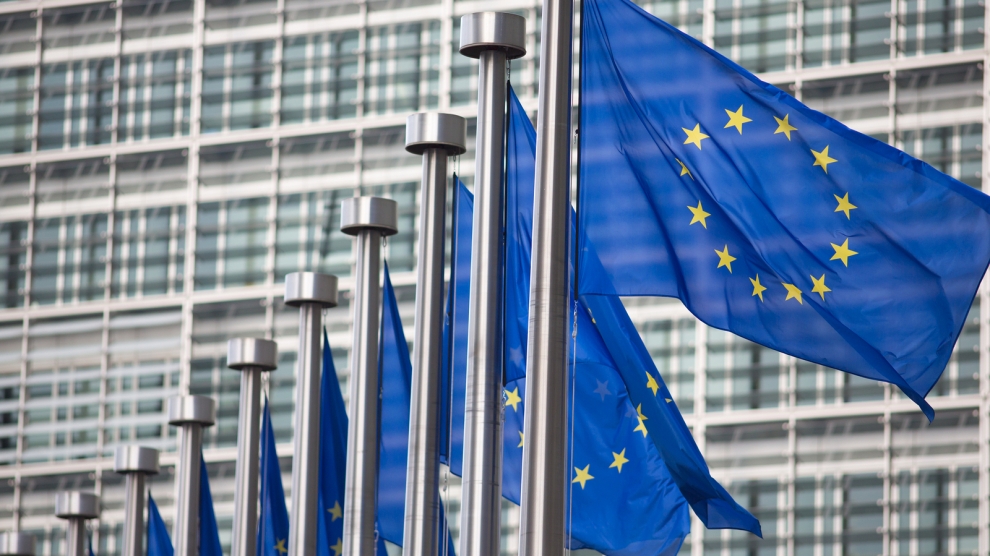
This week, the European Commission approved the disbursement of 36 million euros in grant money for the Republic of Moldova. The announcement was made by Deputy Director-General for Neighbourhood Policy and Enlargement Negotiations at the European Commission, Katarina Mathernova, who paid an official visit to the Republic of Moldova between September 13-15, together with Managing Director for Russia, Eastern Partnership, Central Asia, Regional cooperation and OSCE, at the European External Action Service, Michael Siebert.
The EU officials had meetings with President Maia Sandu, Minister of Foreign Affairs and European Integration, Nicu Popescu, Speaker of Parliament, Igor Grosu, Prime Minister of the country, Natalia Gavrilita, as well as key representatives of Government, international financial institutions and the civil society, according to a press release issued by the Delegation of the European Union to the Republic of Moldova.
Beside such topics as the EU-Moldova relations and prospects, the priorities of the reform agenda of the new Moldovan Government, preparations for the Eastern Partnership Summit at the end of the year and the Transnistrian conflict settlement, the officials also discussed the EU assistance in support of reforms and the Economic Recovery Plan for Moldova, which was announced in June with a total EU support of 600 million euros over the next 3 years.
“The first measures under the Economic Recovery Plan will shortly materialize, with the expected disbursement of 36 million euros in grant money under budget support programmes to support the authorities’ efforts to fight against the consequences of the pandemic. Moldova can count on EU’s assistance on its path to reforms and to recovery, bringing tangible results to citizens,” Katarina Mathernova stated.
The plan is based on assistance provided by the European Union through various bilateral and regional instruments, aiming to mobilize the funds in the form of grants, loans, guarantees and macro-financial assistance.
“The Economic Recovery Plan for the Republic of Moldova involves much more, not just this financial support provided immediately. It must help digital transformation, strengthen infrastructure, energy efficiency, education and support small and medium-sized enterprises,” the EU official also said.
As Prime Minister Natalia Gavrilita informed, “The Economic Recovery Plan and the 5 flagship initiatives for Moldova in the Eastern Partnership will directly contribute to the reform and consolidation of institutions, stimulate long-term socio-economic development, bring direct benefits to citizens, and unleash new economic opportunities through promoting the green agenda and digitization. Small and medium-sized enterprises (SMEs) have been hit hard by the crisis. Promoting and diversifying access to finance and reducing collateral requirements will be essential in supporting economic operators. We are grateful to the EU partners who will launch two programs to support 50 000 independent Moldovan SMEs to adapt to the new conditions.”
President of the Republic of Moldova, Maia Sandu, welcomed the decision of the European Union to disburse about 745 million lei in grant money, as the official page of the President’s Office announced. “EU support comes after a long period of freezing of European assistance, caused by former governments. We managed to relaunch the political dialogue with the European Union and resume financial assistance. The Republic of Moldova is gradually regaining the trust of its strategic partners. This European support is also a signal of encouragement for the new Government team in its commitment to clean up the institutions, fight corruption and launch development programs in the country,” said Maia Sandu.
Photo: unknown
Economy
Romania and Moldova signed a partnership memorandum pledging to cooperate in promoting their wines
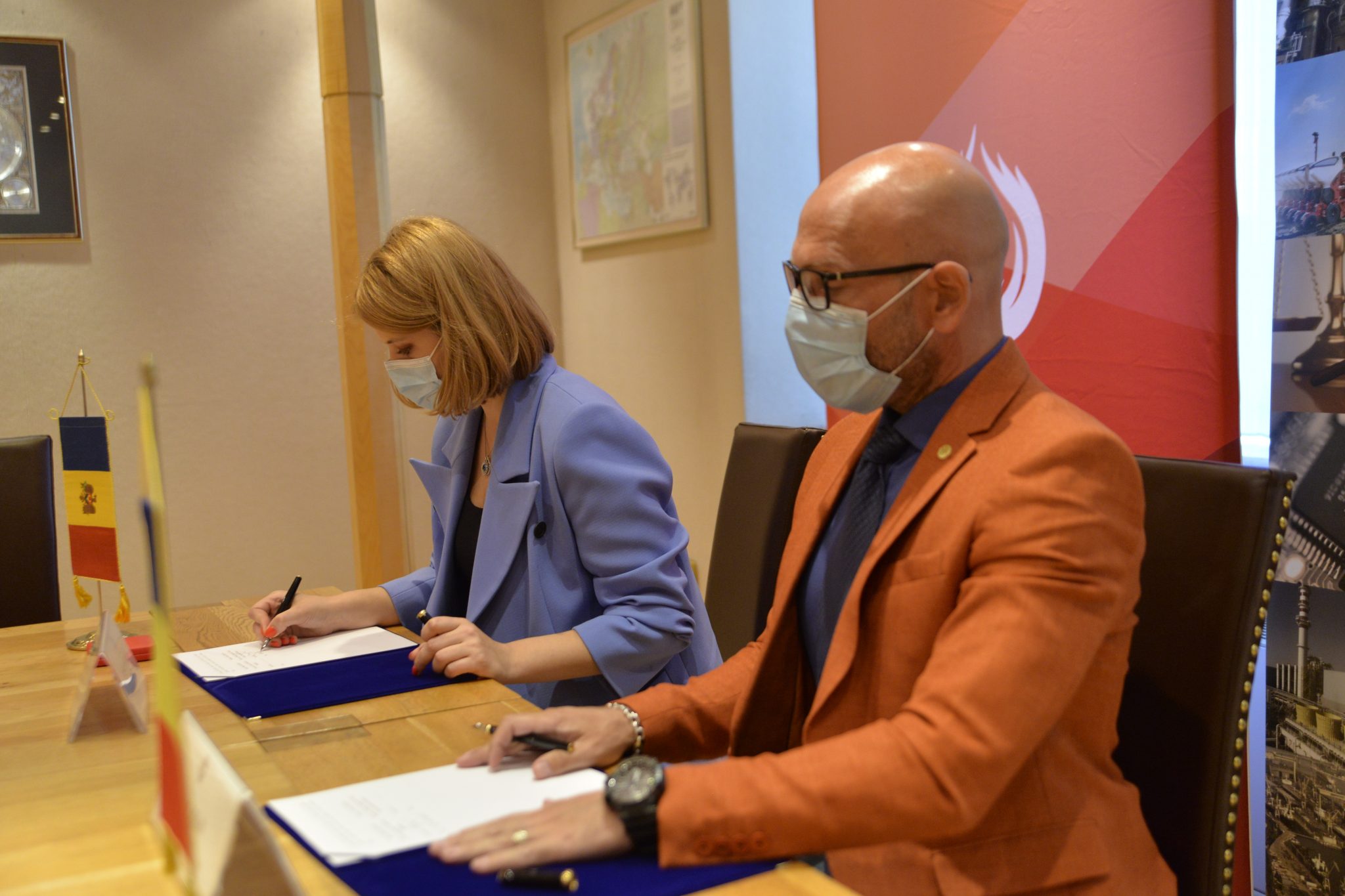
The Chamber of Commerce and Industry of Romania (CCIR) and the National Office for Vine and Wine (NOVW) of the Republic of Moldova signed, last week, a memorandum of cooperation on organizing joint promotional activities in the markets of common interest, as the CCIR announced.
China, Japan or the USA are just some of the markets targeted by the Romanian and Moldovan institutions. The memorandum also involves advertising activities for wines from common indigenous varieties, promoting the oeno-tourist region, developing a tourist route in the two states, exchange of experience, study visits, and mutual support in identifying new export opportunities. “We are very confident that this collaboration between our organizations will lead to sustainable economic growth and a higher degree of well-being among Moldovans and Romanians,” claimed Deputy Secretary-General of CCIR, Bogdan Visan.
On the other hand, Director of the NOVW, Cristina Frolov, declared that no open competition with Romania is aimed at the governmental level of the Republic of Moldova. “This request for collaboration is a consequence of the partnership principle. Romania imports 10-12% of the wine it consumes, and we want to take more from this import quota. Every year, the Romanian market grows by approximately 2.8%, as it happened in 2020, and we are interested in taking a maximum share of this percentage of imported wines without entering into direct competition with the Romanian producer,” the Moldovan official said. She also mentioned that Moldova aims at increasing the market share of wine production by at least 50% compared to 2020, and the number of producers present on the Romanian market – by at least 40%.
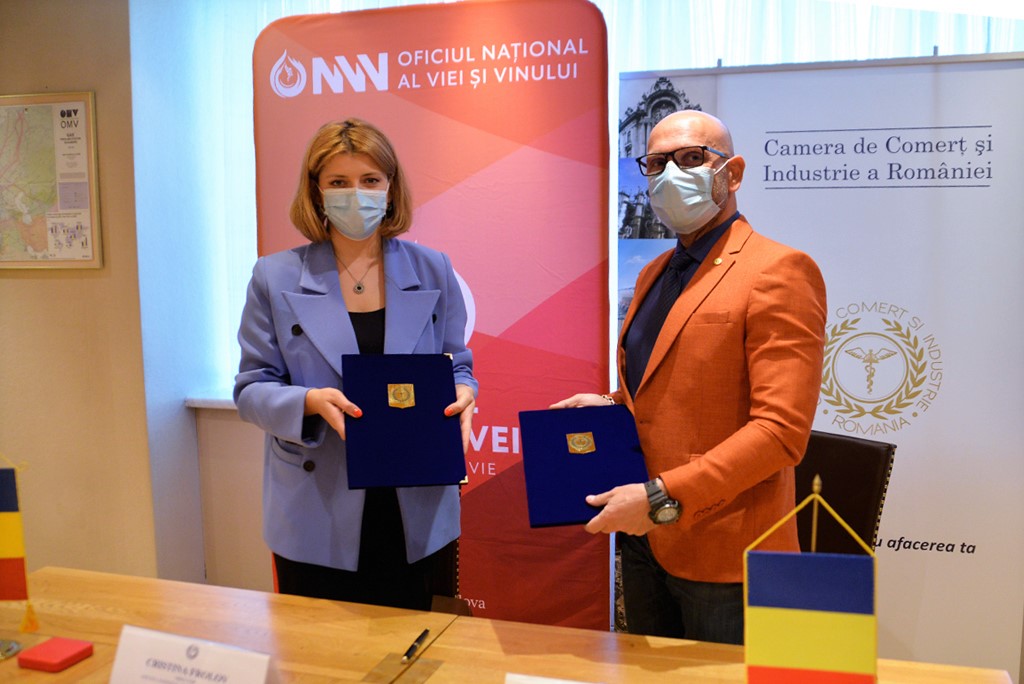
Source: ccir.ro
**
According to the data of the Romanian National Trade Register Office, the total value of Romania-Moldova trade was 1.7 billion euros at the end of last year and over 805 million euros at the end of May 2021. In July 2021, there were 6 522 companies from the Republic of Moldova in Romania, with a total capital value of 45.9 million euros.
The data of Moldova’s National Office of Vine and Wine showed that, in the first 7 months of 2021, the total quantity of bottled wine was about 27 million litres (registering an increase of 10% as compared to the same period last year), with a value of more than one billion lei, which is 32% more than the same period last year. Moldovan wines were awarded 956 medals at 32 international competitions in 2020.
Photo: ccir.ro
Economy
Moldova’s hope to be a top walnut exporter and its main difficulties
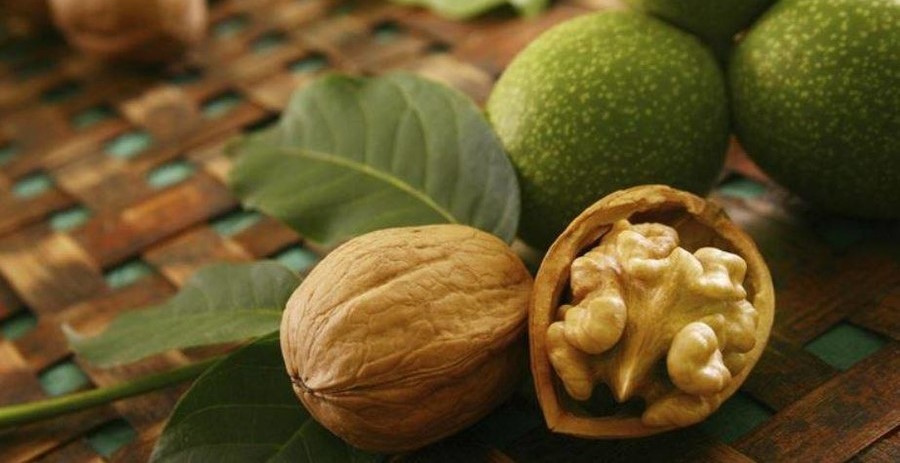
The Republic of Moldova has perfect weather conditions for growing walnut trees, that creating a great potential of walnut production and trade, especially on international markets, where the demand is way higher than the product’s supply. National and international experts believe that the country’s walnut production industry is on the verge of important transformations, which could lead to increased yields, quality and competitiveness worldwide.
According to authorities, Moldova exports 34-35 thousand tons of walnuts in shell, which is about 7% of the total export of fruit and 5% of the total export of horticultural products. The export value is assessed as being $120 million, that being 57-60% of the total fruit export value and about 50% of horticultural export value. Most of walnut crops are exported to the EU countries, such as France, Germany, the Netherlands, Romania and Austria. The country’s exports were among the world’s top 10 when it comes to the highest dollar value of the product during 2020.
Viorel Gherciu, Minister of Agriculture and Food Industry, pointed out that the production in the domestic walnut industry has increased by 55% in the last five years, which ranks Moldova among the main producers in the world.
“The biggest opportunity for this industry is that we are in the geographical proximity of the largest walnut import area in the world, which is the European Union, with almost 40% of total imports in the world. We are on the EU border, with privileged relations, with an Association Agreement. We already enjoy a good relationship in working with European importers, they trust our processors. A very close collaboration has been created and this is, in fact, the guarantee for those who invest in the area,” claimed the president of the Walnut Producers Association, Oleg Tirsina.
The data provided by the National Bureau of Statistics show that there are 34.7 thousand hectares of walnut plantations in the country. 20.90 hectares are represented by orchards. 75% of planted orchards are formed of old varieties trees. 30-35% of the exported production comes from orchards, the rest comes from individual farmers and plantations along the roads. This means that the quality of walnut production is not at its maximum potential. Developing commercial plantations through orchards modernization and extension of walnut varieties would provide double yield and better quality, experts say.
Governmental support in the form of subsidizing solutions, foreign investments and credit options are indispensable for the industry development. One of the financing options is the credit line of the European Investment Bank Project. Since 2016, 15 producers and processors of nuts, almonds and hazelnuts have benefited from these loans with the total amount of investments worth 8.7 million euros. A further extension of the project would provide another 60 million euros for the modernization of the horticultural sector in general and for harvesting organic walnuts in particular.
Photo: heymoldova.com


